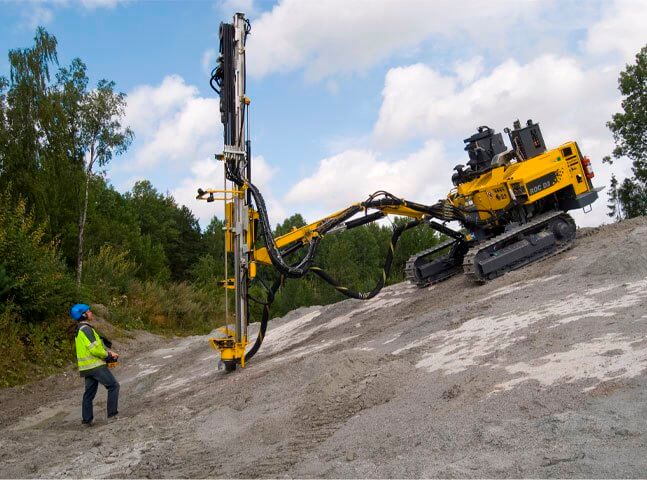 The surface mining industry has just overcome a new milestone: a surface production drill completed a computer-generated drill pattern without human interaction for the first time ever. The Atlas Copco D65 crawler-mounted and articulated drill – developed by Atlas Copco Australia after a partnership with Rio Tinto – levelled, drilled and moved between rows as directed by computer-generated instructions.
The surface mining industry has just overcome a new milestone: a surface production drill completed a computer-generated drill pattern without human interaction for the first time ever. The Atlas Copco D65 crawler-mounted and articulated drill – developed by Atlas Copco Australia after a partnership with Rio Tinto – levelled, drilled and moved between rows as directed by computer-generated instructions.
The researchers started working on this technology in 2008. Now, it’s drilling away in connection with Rio Tinto’s system. The company tested the technology at the Pilbara operations site (Western Australia), as part of its Mine of the Future program. According to Rio’s manager for mining disciplines, Charles McHugh:
Atlas Copco and Rio Tinto worked together to ensure that the tasks assigned to the drill could be received and carried out in an automated fashion with the drill operator located in the office. We expect benefits both from a single operator being able to operate multiple drills and from flexible operation, which will be possible between operators and potentially between operating sites.
Importantly, however, we are also seeing improved drill utilisation and consistency in drill outcomes, providing more accurate information for mine operation.
McHugh adds that the partnership between the big mining firm and Atlas Copco will accelerate the development of more autonomous drilling solutions for the surface mining industry. Such advances will bring several advantages like improved operator safety, higher precision of the drilling process and improved equipment reliability, resulting in superior performance. Rio Tinto’s manager says that:
These advances are about achieving competitive advantage through step changes in mining that come from leadership in technology, starting with academic origin and resulting in a commercial outcome.
Atlas Copco’s business line manager for surface drilling in Australia, Tom Ross, highlights the importance of new technology to the future of mining.
The really clever bit was the ability of the machine to navigate 15 holes — three rows of five holes — without any human involvement, drill the holes, and then return to waiting stance to wait for further instructions. The system spoke to our rig, our rig understood the instructions and carried out the commands rather than it being remote controls.
This is something we’ve been working on for three years, so this is the accumulation of a lot of work to get to this point. There are literally thousands of programmer hours that have been put into the project to get the two systems speaking to each other-
For now, the two companies will continue to work on other new technologies.
Via theajmonline.com.au
